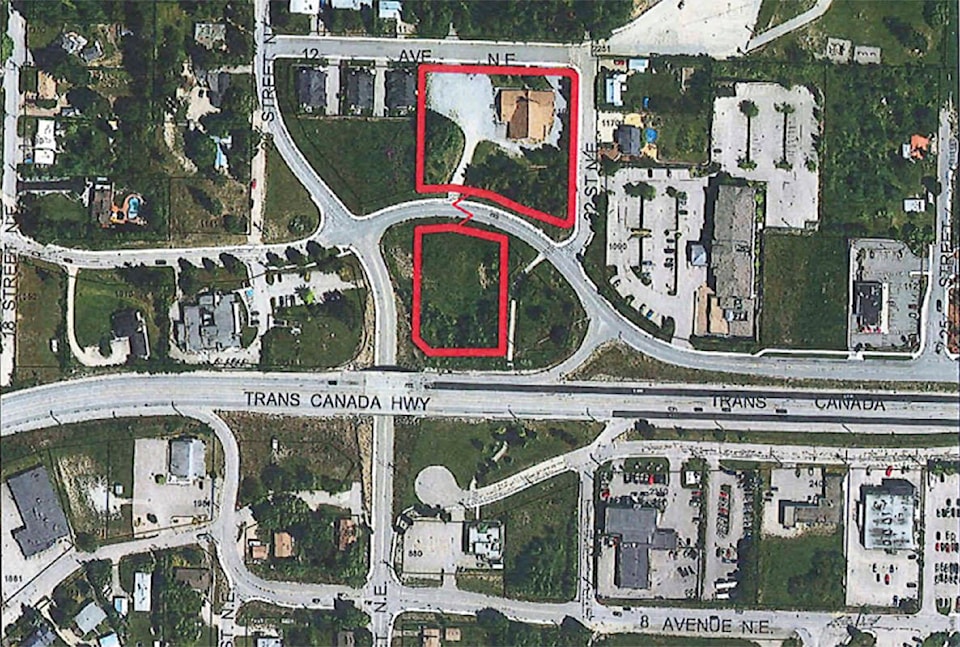Traffic concerns were raised regarding a plan to rezone a piece of property in order to sell it and raise funds to upgrade a Salmon Arm church.
The plan received initial approval from a majority of council at the Oct. 5 planning meeting, as long as a traffic impact study is completed for consideration.
The Cornerstone Christian Reformed Church has applied to city council to rezone a parcel at 1191 - 22nd St. NE, near the police station, from P3, institutional, to C-6, commercial.
“The church building is getting older and needs updates and, as a non-profit, we’re looking at how we can afford to do that,” said applicant Ed Roodzant, on behalf of the church.
The 0.8-acre parcel is on the corner of 11th Avenue NE and 21st Street NE, directly south of the existing Cornerstone Church.
It is what city staff referred to as “hooked” to the church property to the north.The commercial zone would match the Official Community Plan designation of highway commercial for the parcel.
City staff support the plan, reporting the property appears to be well-suited for commercial use being close to the Trans-Canada Highway, residential areas, and the recreation centre and arena.
Kevin Pearson, director of development services, said that last year, the same owner applied to rezone the northern portion of the property from R1, single family residential, to P3, institutional.
Pearson said he asked then if there would be a further application and they said no. He said then it was probably a good thing as subdivision would be a complicated process and would lead to a lot of road works and service upgrades.
Roodzant said he wished he had known then what he knows now as it would have been easier to do it all at once.
Read more: Development plans in Salmon Arm move forward despite pandemic
Read more: Density trumps neighbours during Salmon Arm rezoning hearing
Read more: Majority of Salmon Arm council votes yes to controversial rezoning
Staff said they’ve been getting a lot of inquiries regarding the property in question and also one further down west of the RCMP station that was recently changed from commercial to high density residential and now there’s an application to revert back to commercial.
Coun. Tim Lavery noted the city had received an application for a car wash in the vicinity several years ago, which council turned down.
One of the considerations was traffic in the area.
He said while he doesn’t pretend to be a traffic engineer, he has had longstanding concerns about traffic in the area and would like to have a traffic impact study done before the public hearing on the rezoning.
Coun. Debbie Cannon said after the rezoning would be the time for a traffic study, and suggested that a covenant be placed on the property requiring one.
Mayor Alan Harrison and Couns. Lavery and Chad Eliason voted for an amendment to require a traffic impact study prior to the rezoning, while Couns. Cannon and Louise Wallace Richmond voted against it. The traffic study amendment passed.
Coun. Kevin Flynn was absent and Coun. Sylvia Lindgren has taken an unpaid leave of absence to run in the provincial election.
Roodzant said the church doesn’t have the capacity to take on such a project, but Lavery said funding is available for affordable housing.
The rezoning application was forwarded to the Oct. 13 meeting of council for first and second reading.
marthawickett@saobserver.net
Like us on Facebook and follow us on Twitter
